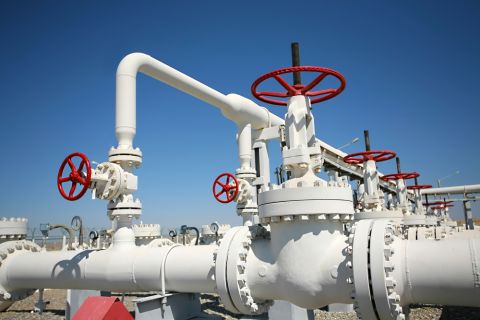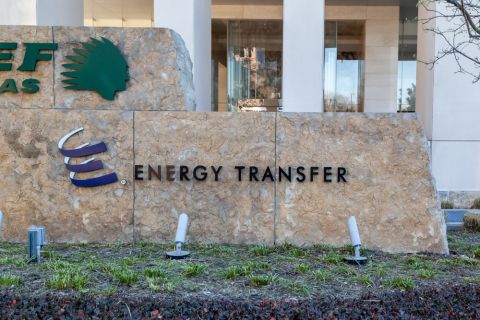
The buzz accompanying Canada’s Duvernay shale cranked up from a dull roar to something like the earsplitting decibel level of a jackhammer on Oct. 17.
That day, ExxonMobil Canada made $3.1 billion worth of noise by snatching up Calgary-based Celtic Exploration Ltd. The deal, which is subject to governmental approval, would give ExxonMobil Canada, a subsidiary of Exxon Mobil Corp., dominion over 545,000 net acres of the liquids-rich Montney shale.
It also includes 104,000 net acres of Alberta’s Duvernay, a play where recent well results have drawn keen attention, according to a new report by Wood Mackenzie.
Duvernay, located in an area where some of western Canada’s largest oil discoveries were first made, has the “potential to become one of North America’s most attractive liquids-rich plays,” said John Dunn, lead analyst of the Wood Mackenzie report.
Dunn analyzed Duvernay well test results, most from the Kaybob area in the northwest of the play. About 80 wells have been drilled, with Kaybob emerging as an early sweet spot.
“We believe that the rich-gas window will generate the strongest returns and be the focus of future activity, due to both high initial production rates and strong Canadian condensate prices,” he said.
But similar to the Eagle Ford and Utica shales, operators aren’t likely to target oil or dry-gas windows aggressively for now. Low gas prices and the true oil windows are less productive than initially anticipated.
While the Duvernay has been known for some time as source rock for oil and gas, new estimates of its production are encouraging, Dunn said.
The Duvernay is part of a formation that includes the Muskwa shale. Last year, Muskwa had an estimated 25 Tcf of marketable natural gas, according to Canada’s Ministry of Energy and Mines.
Duvernay well tests have shown yields of 1.5 MMcf/d to 8 MMcf/d, with an associated liquids yield of 55 bbl/MMcf to 200 bbl/MMcf, according to production disclosures. A Yoho Resources’well produced 6 MMcf/d during a test period with 658 b/d of condensate.
The Duvernay play has a high quantity of condensate, which in Canada typically trades at a premium because of demand for diluents in the oil sands sector. Drilling should step up to the south as companies pick and choose the most valuable and rich areas to reap, he continued.
“There is no one strategy to extract value from other parts of the NGL barrel,” he explained.
Instead, operators must choose to invest in deep- or shallow-cut liquids extraction facilities, or send their gas to third-party plants, Dunn said. Though expensive, deep-cut facilities offer the ability to draw out greater amounts of ethane, propane and butane from the rich-gas stream.
A rich-gas well generates a net present value (NPV), discounted at 10% (NPV 10) of CAD $5.6 million (US $5.4 million) with deep-cut processing. Coupled with a shallow-cut facility, that drops to CAD $4.6 million ($4.4 million), according to the Wood Mackenzie report.
For now, the Duvernay is home to some of most expensive onshore wells in North America. Operators estimate total well costs (including drilling, completing, equipping, and tying-in) of as much as CAD $15 million ($14 million).
Operators will veer toward an extraction method depending on how they view deep-cut costs, long-term gas and NGL prices, and the liquids content of acreage.
With cost-cutting moves, such as retaining long-term fracing crews and better water sourcing, costs could average between CAD $10 million ($10 million) and CAD $12 million ($12 million) on full-scale development, Dunn said.
ExxonMobil said the acres it is buying produce 72 MMcf/d of natural gas and 4,000 b/d of crude, condensate and natural gas liquids. At the end of last year, Celtic Exploration estimated its assets at 128 million oil equivalent barrels of proved-plus-probable reserves made up of 24% crude, condensate, and natural gas liquids and 76% natural gas.
Contact the author, Darren Barbee, at dbarbee@hartenergy.com.
Recommended Reading
Wayangankar: Golden Era for US Natural Gas Storage – Version 2.0
2024-04-19 - While the current resurgence in gas storage is reminiscent of the 2000s —an era that saw ~400 Bcf of storage capacity additions — the market drivers providing the tailwinds today are drastically different from that cycle.
Ozark Gas Transmission’s Pipeline Supply Access Project in Service
2024-04-18 - Black Bear Transmission’s subsidiary Ozark Gas Transmission placed its supply access project in service on April 8, providing increased gas supply reliability for Ozark shippers.
Kinder Morgan Sees Need for Another Permian NatGas Pipeline
2024-04-18 - Negative prices, tight capacity and upcoming demand are driving natural gas leaders at Kinder Morgan to think about more takeaway capacity.
Scathing Court Ruling Hits Energy Transfer’s Louisiana Legal Disputes
2024-04-17 - A recent Energy Transfer filing with FERC may signal a change in strategy, an analyst says.
Balticconnector Gas Pipeline Will be in Commercial Use Again April 22, Gasgrid Says
2024-04-17 - The Balticconnector subsea gas link between Estonia and Finland was damaged in October along with three telecoms cables.




